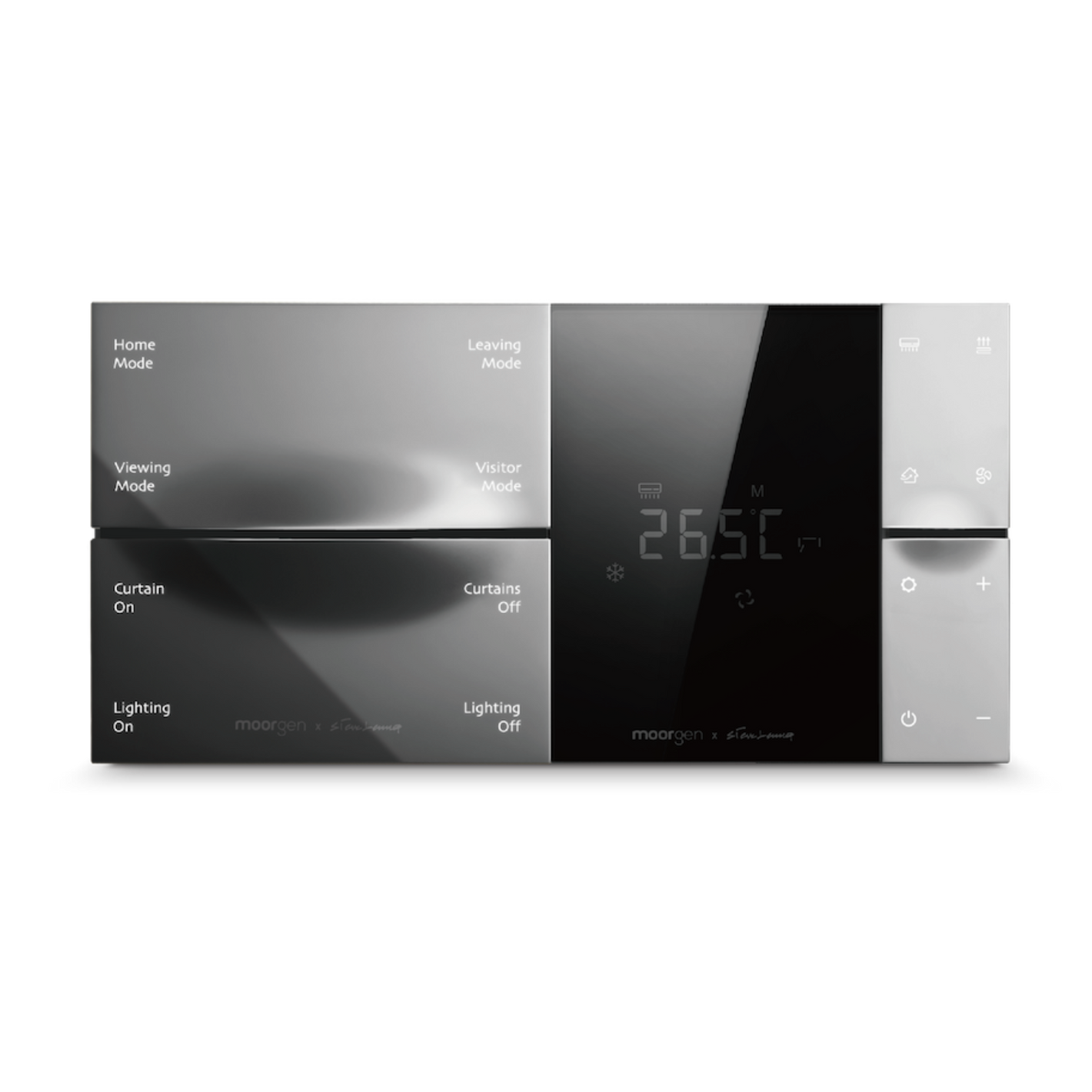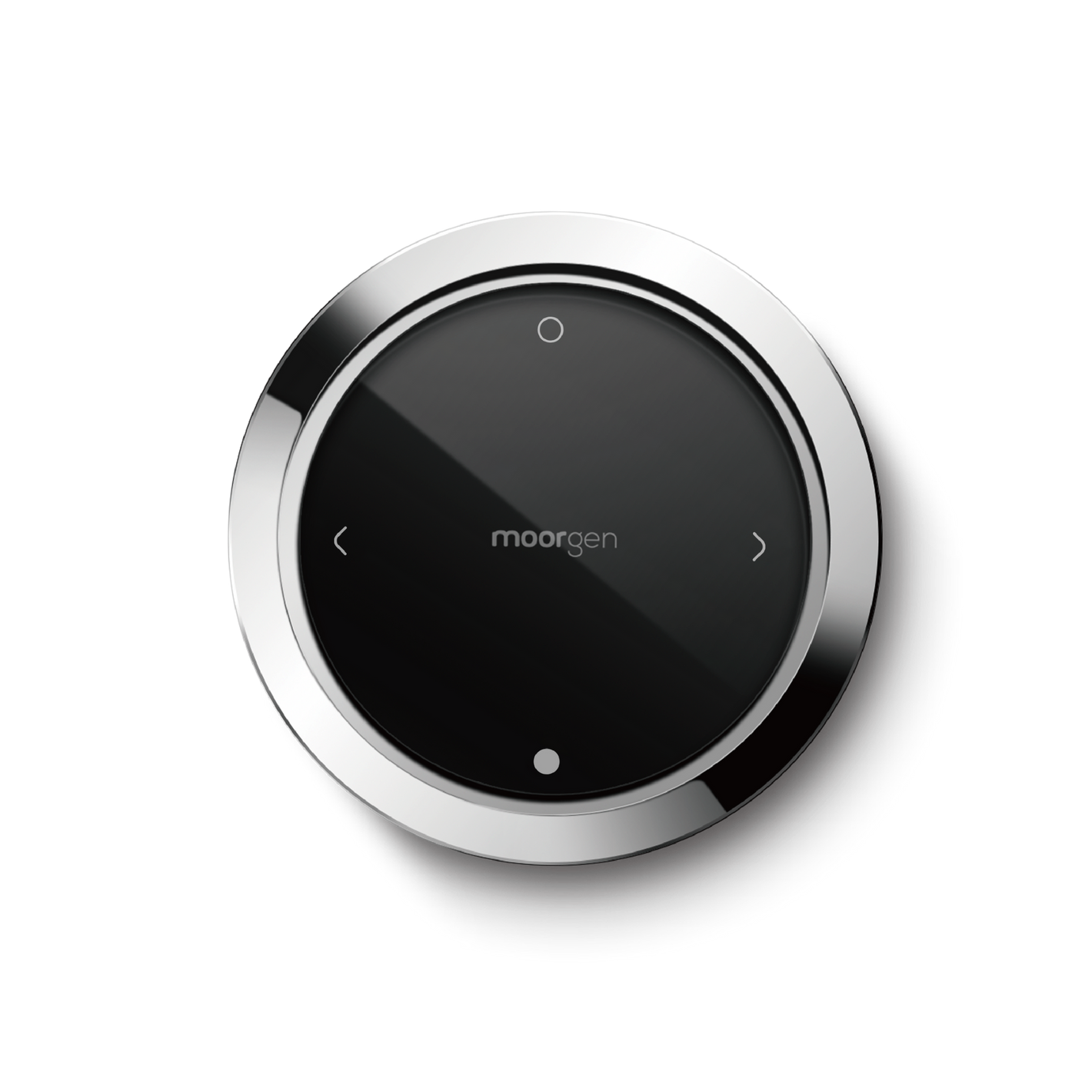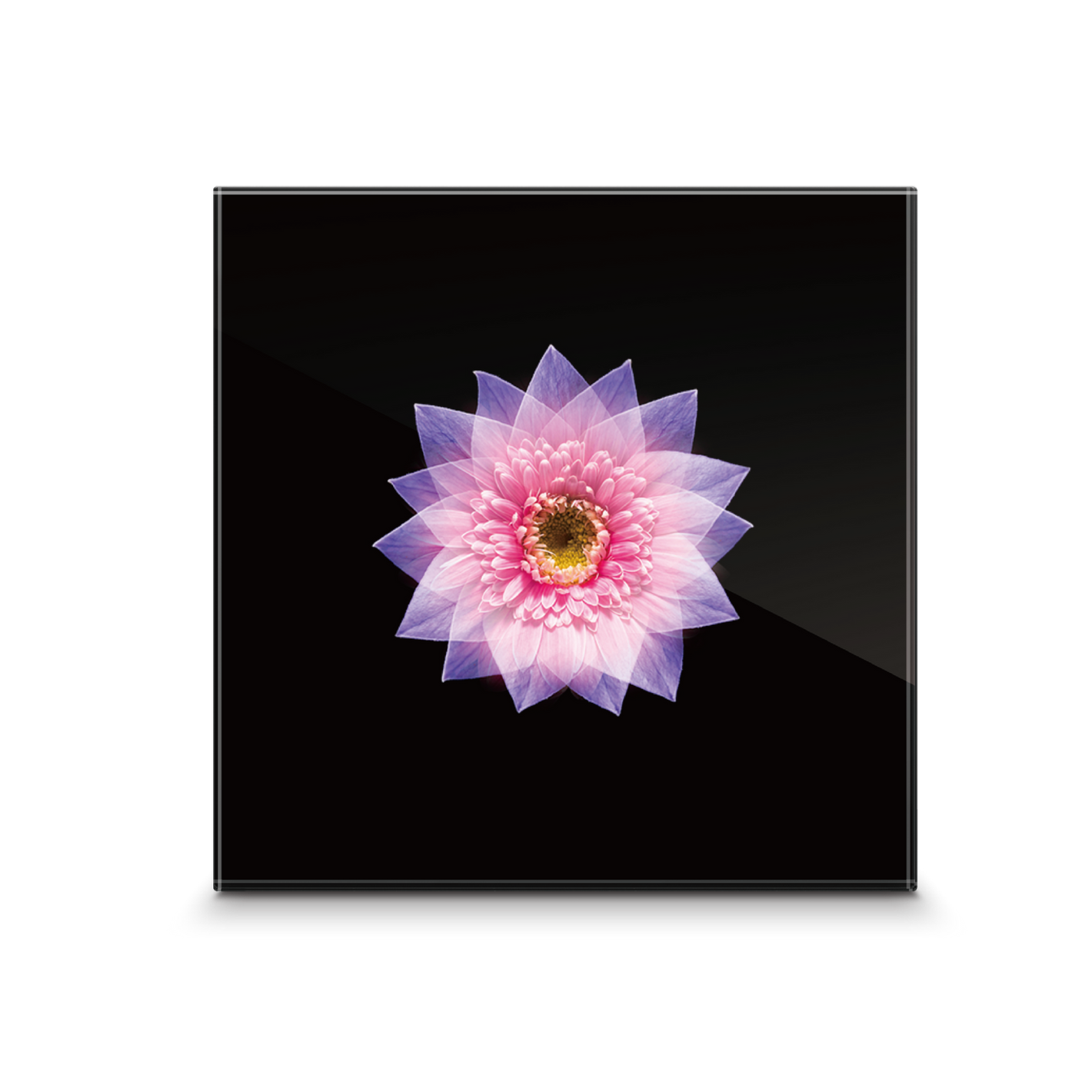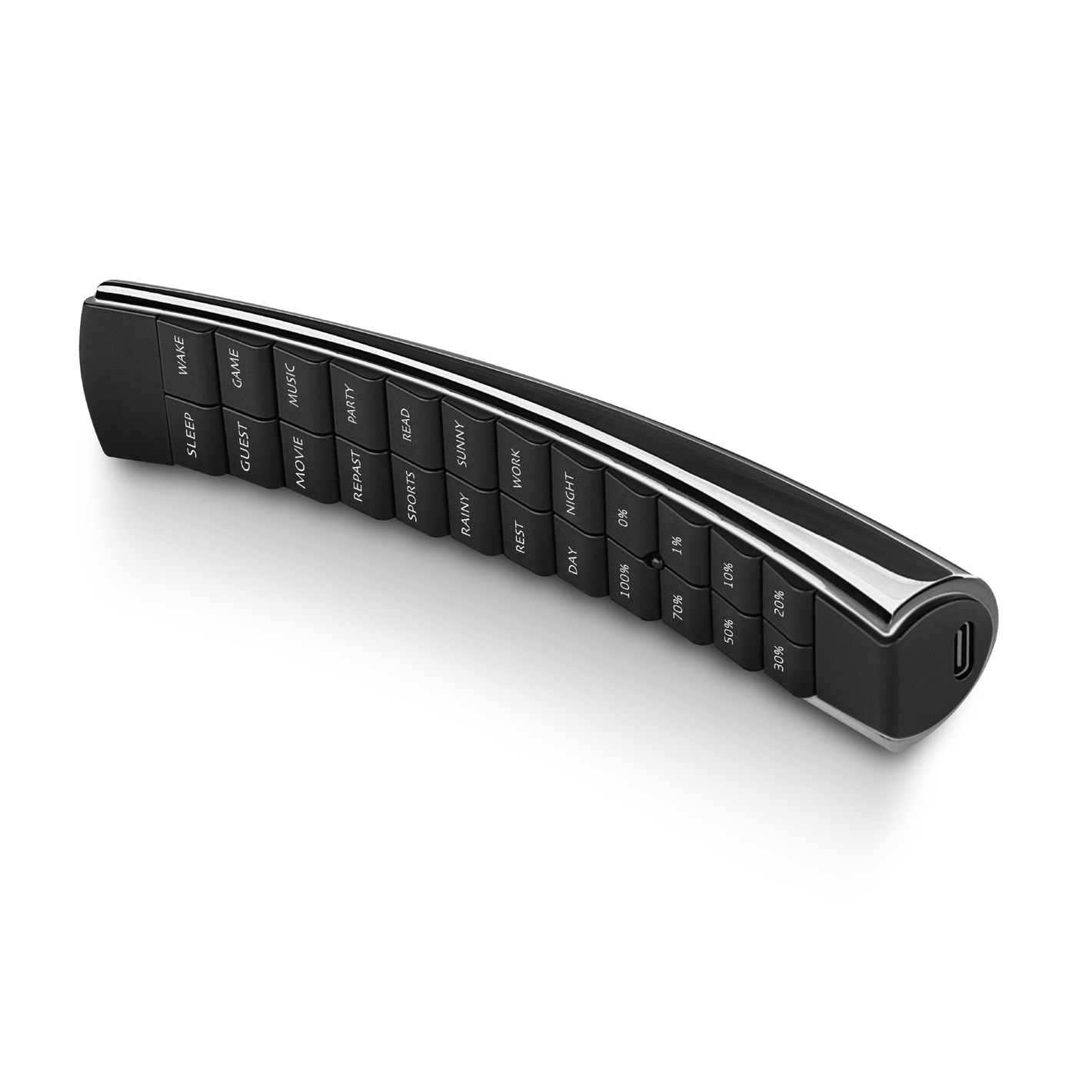【Smart Home Living】Buyer’s Guide to Air Conditioners 2024
Spring has arrived, and some heat-sensitive individuals have already started using air conditioners. It's also time to check if your home's air conditioner is functioning properly. If, unfortunately, your air conditioner isn't cooling, there may be five main reasons. If your air conditioner has been in use for a decade or more, or if you're planning to move, or considering purchasing a new air conditioner, this Moorgenzine guide to buying air conditioners will definitely help you!
Key points of this article:
- Types of Air Conditioners: Split-type, Window Split-type, Window-type, Ceiling-type
- Fixed Frequency Air Conditioners vs. Variable Frequency Air Conditioners
- Capacity of Air Conditioners
- Cooling Capacity
- Energy Efficiency and Power Saving - Energy Labels
- Options for Air Conditioner Features
- Consumer Council Air Conditioner Testing and Ratings
- Installation Locations and Considerations
- Tips for Use and Maintenance
- Power Saving Tips
Types of Air Conditioners: Window-type, Split-type, Window Split-type, Ceiling-type
When buying air conditioners, the first thing to consider is the type of air conditioner, each of which has its own characteristics and price differences. Currently, in the Hong Kong market, window-type and split-type air conditioners are common models. However, these two types of air conditioners are relatively troublesome in terms of maintenance and repair. For example, when cleaning the air conditioner, it is usually necessary to find a professional technician to handle it. Nevertheless, let's first understand the pros and cons of each type of air conditioner:
1. Window-type Air Conditioner
Window-type air conditioners, also known as "standalone air conditioners," are generally upward blowing, and their cooling and exhaust functions are concealed within the unit itself.
Advantages
Window-type air conditioners are generally easier to install and save space. They can be directly installed on window sills, metal brackets, or specially designed concrete platforms, so both the price and installation cost of air conditioners are relatively low.
Disadvantages
Although window-type air conditioners are cheap and space-saving when purchased, maintenance is relatively troublesome. Since the cooling and exhaust functions are concealed within the unit, cleaning the air conditioner is more difficult. The biggest drawback of one-piece design is noise issues. Therefore, it is recommended to purchase window-type air conditioners with rust-proof coated compressors to avoid louder noises caused by compressor rust.
2. Split-type Air Conditioner
As the name suggests, split-type air conditioners are divided into indoor and outdoor units. The outdoor unit contains a compressor and a heat dissipation condensation tube, mainly responsible for cooling, while the indoor unit only handles air outflow, generally divided into side blowing and bottom blowing.
Split-type air conditioners have three main options:
Wall-mounted: relatively convenient to install, easier to maintain, but installation requires consideration of pipeline configuration, which may affect aesthetics.
Concealed: suitable for decoration with wall-mounted installations, or may require a light steel frame ceiling for installation.
Box-type floor-standing: generally has a larger air volume and cools down quickly, but requires a lot of space, usually used in larger spaces or commercial applications.
Advantages
The biggest advantage of split-type air conditioners is quietness. Since the compressor, which is the main source of noise, is located outdoors, and the indoor unit only handles air outflow, the noise generated is minimal.
Additionally, since the compressor and the indoor unit responsible for air outflow are separate, one outdoor unit can support several indoor units in different rooms.
Disadvantages
Although split-type air conditioners are quieter, the installation process is complex because the indoor and outdoor units are separated. The outdoor unit, which is mainly responsible for cooling, is usually installed on the exterior wall of the building (thus also called "wall-mounted split-type"), which requires complicated installation procedures, sometimes even scaffolding, so the installation cost is relatively high. Additionally, since the main cooling outdoor unit is located outside the house, maintenance is definitely more troublesome compared to window-type air conditioners, and if problems occur, the cost charged by professional air conditioner technicians is also higher.
Window Split-type Air Conditioner
Window Split-type air conditioners are a relatively new design, which actually combines the advantages of window-type and split-type air conditioners. Similar to split-type air conditioners, the air conditioner is divided into indoor and outdoor units, but the outdoor unit responsible for cooling is smaller in size than conventional split-type air conditioners and can be installed on most window positions or concrete window sills. Therefore, window Split-type air conditioners are often referred to as "compact" or "compact series" split-type air conditioners.
Advantages
Window Split-type air conditioners can be said to combine the advantages of window-type and split-type air conditioners. Because it is still a split-type air conditioner, the noise generated during operation is relatively low and relatively quiet. In addition, because the outdoor unit is small in size, it is very suitable for installation in residential units with limited wall positions. Installation does not require scaffolding, and the installation cost is lower than that of conventional split-type air conditioners. Moreover, the outdoor unit is generally within reach indoors, so maintenance is more convenient than split-type air conditioners, and the cost charged by air conditioning technicians is between window-type and split-type.
Disadvantages
Although the outdoor unit of the window Split-type air conditioner is designed to be compact, installation costs are still higher than those of window-type air conditioners due to the separation of indoor and outdoor units. However, they are relatively cheaper compared to split-type air conditioners.
Ceiling-type Air Conditioner
Ceiling-type air conditioners are the square ones commonly seen in restaurants, mainly used for commercial purposes such as schools, restaurants, offices, etc., and are rarely installed in residential units unless they are very large units.
Advantages
The advantage of ceiling-type air conditioners is that they can blow air in all directions, allowing the air conditioner to blow into every corner of the room. In addition, all the wires of the ceiling-type air conditioner are hidden in the ceiling, reducing the risk.
Disadvantages
The disadvantage of ceiling-type air conditioners is that they are very expensive and consume a lot of electricity. Moreover, because wiring is required and the air conditioner itself has its own height, the floor height must be at least 3 meters to be suitable for installation, so even if you want to install them in general residences, it may not be feasible.
Fixed Frequency Air Conditioners vs. Inverter Air Conditioners
When buying air conditioners, the second thing to consider is the operation mode of the air conditioner, generally divided into two types - fixed frequency and inverter. The operation modes of these two types of air conditioners are different, resulting in different power consumption.
Fixed Frequency Air Conditioners
The operation mode of fixed frequency air conditioners is simple. When turned on, it operates at a fixed frequency (fixed frequency), i.e., speed, until the room temperature reaches the set temperature, at which point the compressor responsible for cooling stops temporarily. When the room temperature rises again, the compressor restarts and blows out cold air again, lowering the room temperature, and repeating this process.
Since the compressor needs to constantly switch on and off, fixed frequency air conditioners have relatively higher power consumption and the room temperature may be less stable. If you decide to purchase a fixed frequency air conditioner, it is recommended to control the opening time within two hours each time.
In addition, since fixed frequency air conditioners constantly switch on and off, each time the compressor starts, it emits louder noise, so fixed frequency air conditioners are not a good choice for those who are easily disturbed by noise during sleep.
The only advantage of fixed frequency air conditioners is their lower price.
Inverter Air Conditioners
As the name suggests, inverter air conditioners do not have only one fixed frequency but can adjust the operating frequency for cooling. Inverter air conditioners have a built-in adjustment system. When the room temperature reaches a certain temperature, the inverter air conditioner does not stop operating but automatically lowers the speed (frequency) of the compressor and continues to operate to maintain the room temperature, avoiding the repeated switching operation like fixed frequency air conditioners, which allows inverter air conditioners to achieve cooling effects at lower power consumption.
Moreover, because the room temperature can be maintained at a certain temperature and is very stable, inverter air conditioners consume relatively less power. According to the Consumer Council (Consumer Council) testing in 2016, inverter air conditioners can save up to 40% of electricity on average throughout the year compared to fixed frequency air conditioners. Assuming two units, each with one horsepower, of fixed frequency and inverter air conditioners, are turned on 180 days a year, each day for 12 hours, the electricity bill for a year for an inverter air conditioner is about HK$469, while the fixed frequency air conditioner requires HK$908.
In addition, since inverter air conditioners do not constantly switch on and off, they emit less noise, making them especially suitable for installation in homes.
Where there are gains, there are losses. Inverter air conditioners generally are more expensive than fixed frequency air conditioners. And because inverter air conditioners constantly vary their frequency, their durability is also lower than that of fixed frequency air conditioners, which is also something to be aware of.
Air Conditioner Capacity
When buying for air conditioners, you'll often come across different capacities, such as 0.75 HP, 1 HP, 1.5 HP, 2 HP, and so on. The capacity represents the power output of the air conditioner, which correlates with its cooling ability. Simply put, the higher the capacity, the greater the cooling ability, but also the higher the energy consumption.
Choosing the right capacity for your air conditioner generally depends on the size of your home – the larger the home, the higher the capacity needed.
Does opting for a smaller capacity air conditioner save energy?
Some people choose smaller capacity air conditioners to save energy. However, because smaller capacity air conditioners have lower cooling capabilities, the compressor of the air conditioner needs to operate at maximum speed for longer periods to maintain the indoor temperature, resulting in long-term energy consumption. Consequently, in the long run, it might not necessarily save energy.
On the other hand, selecting an air conditioner with a capacity suitable for your home size can lead to optimal cooling ability, allowing the air conditioner to reach the desired temperature in a shorter time. This reduces the compressor's operating time, which may result in energy savings in the long term.
Cooling Capacity
As mentioned, higher capacity translates to greater cooling ability. However, cooling capacity is also measured in kilowatts (kW) or British Thermal Units per hour (BTU/h), with higher values indicating higher cooling capacity. Therefore, when shopping for air conditioners, it's essential to consider this cooling indicator.
Energy Efficiency and Energy Saving - Energy Labels
Energy Label for Air Conditioners
As a mature economy, energy efficiency has become a significant concern in Hong Kong. To facilitate and encourage the purchase of energy-efficient appliances, the government has implemented the Mandatory Energy Efficiency Labeling Scheme, requiring appliances to display energy efficiency labels. This enables consumers to easily understand and compare the energy efficiency of appliances when making purchasing decisions.
The energy label primarily includes three indicators:
- Energy Efficiency Grade - Ranging from Grade 1 (highest) to Grade 5 (lowest).
- Annual Energy Consumption
- Cooling Capacity (kW) - Represents the maximum cooling capacity.
For example, for window-type air conditioners, a "Grade 1 energy label" can save up to 11% more electricity compared to a "Grade 3 energy label" and up to 25% more compared to a "Grade 5 energy label."
The difference in split-type air conditioners is even more significant, with a "Grade 1 energy label" saving 36% more electricity than a "Grade 3 energy label" and up to 61% more than a "Grade 5 energy label."
Relationship between Energy Efficiency Labels and Electricity Bills
While comparing air conditioners based on grades is straightforward, the "annual energy consumption" indicated on the energy label provides a clearer understanding of which air conditioner is the most energy-efficient. It's essential to also consider the cooling capacity (kW) to ensure energy-efficient operation while providing sufficient cooling capacity.
The energy efficiency of air conditioners is generally calculated as the ratio of cooling capacity to power consumption, known as the Energy Efficiency Ratio (EER). A higher EER value indicates better cooling efficiency and, consequently, more energy savings.
Latest Energy Efficiency Rating Standards (Window-type Air Conditioners)
To further encourage manufacturers to produce more energy-efficient air conditioners, the Electrical and Mechanical Services Department (EMSD) has raised the energy efficiency rating standards for window-type air conditioners since December 31, 2021.
Although the rating standards have been raised, the appearance of the new energy label remains similar, with the same three indicators. However, the reference number on the energy label of air conditioners will be prefixed with "U2-". The reference number on the old label would be like "C" followed by 6 digits (e.g., "C240019"), while on the new label, it would be "U2-C" followed by 6 digits (e.g., "U2-C240019"), making it easier for consumers to identify.
The EMSD website also provides an "Energy Calculator" tool, which allows consumers to easily understand the electricity consumption and expenses of different brands or models of appliances, including air conditioners, washing machines, refrigerators, dehumidifiers, etc., making it easier for consumers to make informed choices.
Feature Options
In addition to understanding the type, frequency conversion or fixed frequency, capacity, and energy efficiency of air conditioners, the features of air conditioners are also essential. With the rise of smart homes and advancements in technology, air conditioners on the market are becoming more comprehensive in terms of features. Therefore, when shopping for air conditioners, consider how each model can offer a different living experience for you.
Air Purification
Traditional air conditioners typically come equipped with a basic filter or dust screen to trap particles and dust in the air. However, newer models of air conditioners include UV ultraviolet air filtration systems or anti-oxidation filters in addition to the dust screen, making the indoor air fresher.
Humidity Control
Traditional air conditioners only focus on indoor temperature, but running the air conditioner can reduce indoor humidity, leading to excessively dry indoor environments. Since air conditioners are also related to indoor air, controlling humidity is essential. Newer models of air conditioners have humidity control functions that can maintain indoor humidity when turned on, reducing the feeling of dryness on the skin, which is crucial for users who need to run the air conditioner to sleep at night.
Conversely, if summers, like those in Hong Kong, are often humid, air conditioners can also have dehumidification functions.
Eco Energy Saving Mode
The Eco energy-saving mode is becoming increasingly common, with each air conditioner brand handling the Eco energy-saving mode differently. In general, air conditioners can automatically increase the temperature by 1 - 2 degrees through a mechanism or condition, reducing the compressor's operating speed to save energy.
Human Body Sensor
Newer models of air conditioners can also be equipped with human body sensors or even infrared body temperature detectors. When there is no one in the room or home, the air conditioner switches to Eco energy-saving mode to reduce electricity consumption.
Some more intelligent models will automatically direct the cold air flow toward the target when a person is detected indoors, ensuring that every cooling process is enjoyed by the user.
Remotely-Controlled Vent
Some traditional air conditioners have vents that can only be manually adjusted, which is inconvenient to use. Vents that can be controlled remotely via a remote controller, smartphone app, or smart home system can direct the vents in vertical or horizontal directions for more effective airflow, helping to lower the indoor temperature.
If you want to know whether the vents should be directed upwards or downwards, you can refer to: Air-Conditioner Vent Should Be Tilted Up or Down? How to Make Your Air
Control Methods
Control methods generally involve infrared remote controls. The rise of smart homes has made controlling air conditioners more convenient. For example, some newer models of air conditioners come equipped with Wi-Fi and LED display touch panels or can be controlled via a smartphone app. Additionally, certain types of air conditioners can be connected to smart home systems, allowing centralized control of all household appliances and air conditioners through smart home system interfaces, smartphone apps, or universal remote controls.
Fan Speed
The fan speed of the air conditioner has some degree of impact on its actual effectiveness during use. When shopping for air conditioners, you can choose models with a wide range of airflow and multiple fan speed settings, allowing the indoor air to circulate continuously through the fan, helping to lower the indoor temperature, and reducing power consumption to maintain indoor temperature, keeping the compressor at low speed, resulting in a quieter overall operation.
Noise Issues
Air conditioners generally emit some noise during operation. However, noise usually doesn't have a standard reference, and often, it's only known when actually used. How can you shop for a quieter air conditioner? Firstly, some models advertise themselves as quiet and provide the decibel (dB) level of the noise emitted during air conditioner operation. Additionally, it's advisable to gather more information online, such as forums or social media, to see other users' opinions before making a choice.
Consumer Council Air Conditioner Testing and Ratings
Comparing numerous air conditioners can be exhausting unless you meticulously compare them one by one using Excel. To aid consumers, the Consumer Council tested 13 models of 1.5 HP window-type air conditioners available on the market in April 2023. Among them, 10 were inverter-type models, while 3 were fixed-frequency ones. The claimed cooling capacity of these 13 window units ranged from 3.400 to 3.643 kW, suitable for approximately 300 sqft of space. The Consumer Council's testing was conducted according to international standards, with indoor temperatures and relative humidity set at 27°C and 48%, respectively, and outdoor temperatures set at 35°C and 41%.
Among the 13 tested air conditioners, the top-rated models, receiving 4.5 out of 5 points, were the inverter-type window units from Gem General and Gree Gree. The lowest-rated model was the fixed-frequency window unit from Fuji Electric, scoring only 3.5 points.
Cooling Efficiency: General Inverter Type Triumphs
Cooling Efficiency (Cooling Seasonal Performance Factor, CSPF) refers to the cooling capacity achieved with the same amount of electricity. A higher value indicates better cooling efficiency and energy savings.
Among the 13 models tested, cooling efficiency ranged from 3.106 to 4.937. The General inverter model AMWB12NIC had the highest value (4.937), while the Fuji Electric fixed frequency model RMB12GPTN had the lowest (3.106).
Electricity Cost: Annual Electricity Cost Difference up to HK$ 755
Assuming an electricity cost of HK$ 2 per kWh, with the air conditioner running for 180 days a year, 12 hours a day, the average annual electricity cost for the 13 models was approximately HK$ 1,613. For the 10 inverter-type models, the average annual electricity cost was HK$ 1,496, while for the fixed-frequency models, it was HK$ 2,003. Clearly, inverter-type air conditioners are more energy-efficient, with an average difference of HK$ 507.
The General inverter model AMWB12NIC had the lowest average annual electricity cost at approximately HK$ 1,290, while the Hitachi fixed-frequency model RA-13RF had the highest at HK$ 2,045, a difference of HK$ 755.
However, the Consumer Council noted that actual circumstances may vary, and the data provided is for reference only.
Dehumidification Performance: Ryobishi Fixed-frequency Model Stands Out
Given the high humidity in Hong Kong during summer, another important function of air conditioners is dehumidification. In this regard, the Ryobishi fixed-frequency model RB-12MC performed the best among the 13 models tested.
For inverter-type air conditioners, the General AMWB12NIC model, Whirlpool AWV12000R model, Midea MW-12CRF8B model, and Carrier CHK12EAVX model had comparable dehumidification performance.
Noise Comparison: Hitachi Inverter-type - Quietest Indoors and Outdoors
Noise is an unavoidable issue with air conditioners, so choosing quieter models is preferable. Indoors, the General inverter model AMWB12NIC, Hitachi inverter model RAW-VJ13SCASK, and Tosot TOSOT W12V4A were equally quiet.
In terms of outdoor noise, while it might not directly affect indoor life, noise pollution is a significant issue in Hong Kong. In the Consumer Council's noise tests, the Hitachi inverter model RAW-VJ13SCASK, Whirlpool inverter model AWV12000R, and LG inverter model W3NQ2LNNP1 were relatively quiet.
For minimizing indoor and outdoor noise, the Hitachi inverter model RAW-VJ13SCASK stood out among the 13 models tested.
Energy Efficiency Discrepancy with Labels: Panasonic and Rasonic
The Panasonic inverter model CW-HU120ZA and Rasonic inverter model RC-HU120Z both claimed to have Energy Efficiency Grade 1, but the Consumer Council found their actual energy efficiency grades to be Grade 2, lower than claimed, potentially misleading consumers regarding their annual electricity expenses.
Though both models did not violate the Mandatory Energy Efficiency Labeling Scheme and fell within the international tolerance range of within 8%, consumers should not assume that models with the same Grade 1 energy label have the same energy-saving effect.
Installation Position and Considerations
The installation position of air conditioners is crucial when making a purchase decision. Whether it's a window-type or split-type air conditioner, it's essential to ensure the purchase price includes basic installation. Additionally, different brands and retailers may include various engineering items, data, and details in their basic installation packages. If installation fees are uncertain before making a decision, consumers can inquire whether the retailer can send technicians for a home visit for a quotation, though additional charges may apply.
In some cases, properties with glass curtain walls may make it challenging to install air conditioners, necessitating specific positions for split-type units rather than window-type ones. Some situations may require appointments with building management for scheduling installation using special equipment, incurring additional waiting time and costs.
Window-Type Air Conditioners
Window-Type Air Conditioners - Installation Considerations
For window-type air conditioners, having a suitable window for installation is crucial, categorized into those with and without installation platforms. If there's an installation platform, attention should be paid to whether the window frame and brackets can support the weight of the air conditioner. Technicians should securely fasten the air conditioner using expansion screws to concrete. If there's no installation platform, technicians should use an installation bracket to ensure the air conditioner is securely fixed. This not only prevents noise caused by compressor operation but also prevents accidents such as the air conditioner falling off during typhoons.
In some older residences without air-conditioning windows, it's essential to communicate with salespeople before purchasing window-type air conditioners and understand the actual installation charges.
After installing window-type air conditioners, it's necessary to check whether they are securely installed, whether the drainage pipes are properly connected, and whether the metal parts of the brackets have equipotential bonding.
The Consumer Council recommends that air conditioner installation should be handled by the air conditioner supplier, providing greater assurance for both equipment and installation issues. Alternatively, consumers can choose contractors recommended by suppliers for better installation quality and easier follow-up in case of problems.
Window-Type Air Conditioners - Installation Position
Before installation, it's essential to consider whether the installation position of the air conditioner is often exposed to direct sunlight, which could increase the load on the air conditioner. This is particularly important for high-rise buildings, as direct sunlight can significantly raise the temperature of the air conditioner.
Additionally, some buildings prohibit extending the air conditioner's body outdoors, forcing the air conditioner's body indoors. However, moving the air conditioner's body indoors may block the heat dissipation position, seriously affecting the efficiency and cooling effect of the air conditioner and shortening its lifespan.
Split-Type Air Conditioners
Split-Type Air Conditioners - Installation Considerations
As split-type air conditioners consist of outdoor and indoor units, installation costs mostly depend on the outdoor unit's installation position. Therefore, when purchasing split-type air conditioners, it's essential to communicate with salespeople to understand the actual installation charges.
Split-Type Air Conditioners - Installation Position
As split-type air conditioners consist of outdoor and indoor units, attention should be paid to the installation positions of both units.
Outdoor Unit: It's recommended to install it on a well-ventilated exterior wall with clean surroundings and no range hood outlet. Similar to window-type air conditioners, avoid choosing places exposed to direct sunlight to prolong the air conditioner's lifespan.
Indoor Unit: It's recommended to install it slightly tilted, with clean surroundings near the drainage hole to facilitate drainage.
Warranty Period
Since air conditioners generally last for a decade or more, maintenance is essential in addition to installation.
Full-Machine Warranty Period: The full-machine warranty period for most new air conditioners ranges from 1 to 3 years.
Compressor Warranty Period: The compressor warranty period for air conditioners is generally longer, usually 5 years, with some brands offering 10 years or even lifetime warranties.
Renewal Premium: If the warranty period has expired and you want to continue the warranty, a renewal premium will apply, typically ranging from HK$ 500 to HK$ 1,500, depending on the brand, with significant differences.
On-Site Inspection Fee: During the warranty period, free on-site inspections are generally included in urban areas, with additional inspection fees for remote areas. Additionally, during the warranty period.
Air Conditioner Cleaning Fee: During the warranty period, air conditioner cleaning is usually offered at a discounted price, ranging from approximately HK$ 500 to HK$ 3,000, depending on the brand, with significant differences.
Before purchasing an air conditioner, it's crucial to clarify with the salesperson the warranty period provided by the air conditioner brand and the scope of maintenance included. Even if the air conditioner malfunctions, this can reduce the additional cost of finding another technician.
Air Conditioner Use and Energy-Saving Tips
Air Conditioner - Usage Tips
To prolong the lifespan of the air conditioner, there are some points to note during use:
- Regularly check whether the air conditioner is stable and have technicians inspect, maintain, and repair the air conditioner regularly.
- Regularly clean the dust filter, inlet, and outlet to prevent airflow blockage, which affects efficiency.
- When the outdoor temperature is lower, consider using a fan to reduce air conditioner usage and load.
- If the air conditioner has a timer function, preset the shutdown time to avoid prolonged usage or forgetting to turn it off, increasing the load on the air conditioner.
Air Conditioner - Energy-Saving Tips
To stay cool while saving energy, consider the following energy-saving tips for using air conditioners, as recommended by the Consumer Council:
- Avoid installing air conditioners in areas directly exposed to sunlight.
- Set the air conditioner temperature not too low, with indoor temperatures recommended between 22.5 and 25.5 degrees Celsius, to save electricity.
- If using the air conditioner for extended periods during summer, consider cleaning the dust filter, inlet, and outlet approximately every two weeks to prevent airflow blockage, affecting efficiency and increasing electricity consumption.
- When outdoor temperatures are lower, use a fan, which consumes less electricity than an air conditioner.
- Prevent any debris or obstructions from blocking the air conditioner's air intake and outlet.
- If the air conditioner has a timer function, preset the shutdown time to save energy.
- Remember to turn off the air conditioner when not in use.
- For even greater energy savings, consider using a fan in conjunction with the air conditioner to cool the room faster.
- When using the air conditioner, close the curtains and try to close doors and windows to maintain indoor temperatures.
After reading this Moorgenzine article, you should have a deeper understanding of how to choose an air conditioner. If you have any questions about smart home technology, feel free to contact Moorgen anytime. Additionally, if you want to experience the lifestyle enhancement brought by smart door locks, visit Moorgen's showroom in North Point, Hong Kong, and experience Real Smart Home.
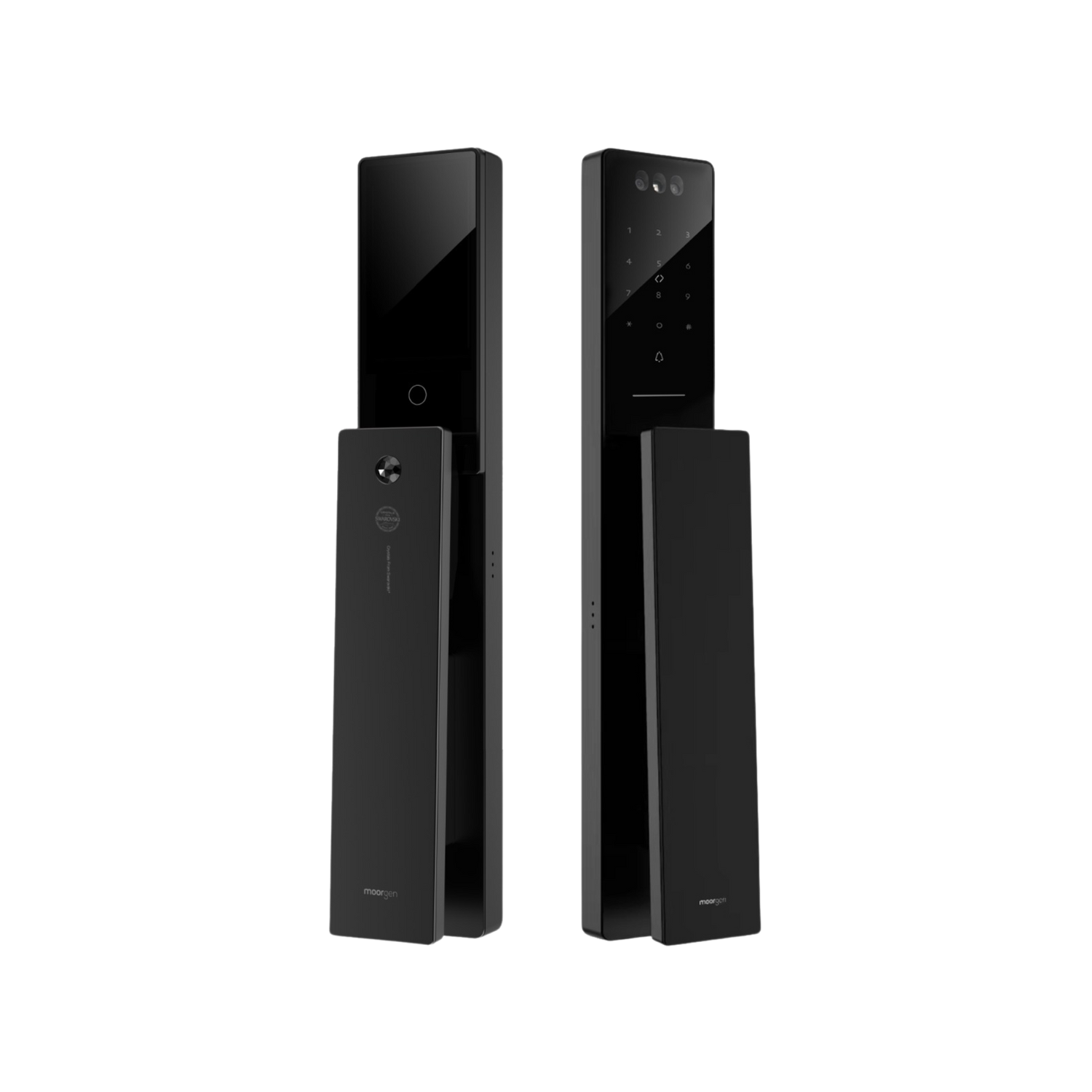


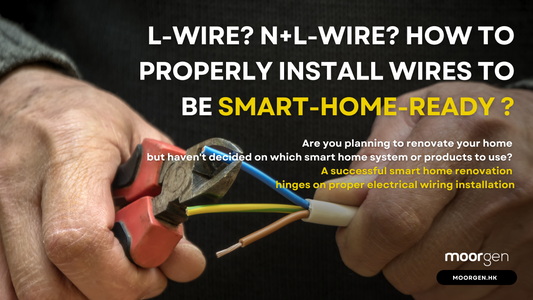

![[Smart Living] How to Choose a Smart Power Strip? Swift Transform Your Home into a Smart Home!](http://moorgen.hk/cdn/shop/articles/blog_cover_moorgen_how_to_choose_smart_power_strip.png?v=1728137093&width=533)
![[Smart Living] How to Choose LED Bulbs? Which Ones Are the Most Energy-Efficient?](http://moorgen.hk/cdn/shop/articles/blog_cover_moorgen_how_to_choose_led_bulbs.png?v=1728136975&width=533)
![[Smart Living] How to Choose an Instant Hot Water Dispenser and Use It Efficiently?](http://moorgen.hk/cdn/shop/articles/blog_cover_moorgen_how_to_choose_instant_hot_water_dispenser.png?v=1728136837&width=533)
![[Smart Living] 5 Energy-Saving Tips for Electric Kettles](http://moorgen.hk/cdn/shop/articles/blog_cover_moorgen_energy_saving_tips_electric_kettles.png?v=1728136710&width=533)
